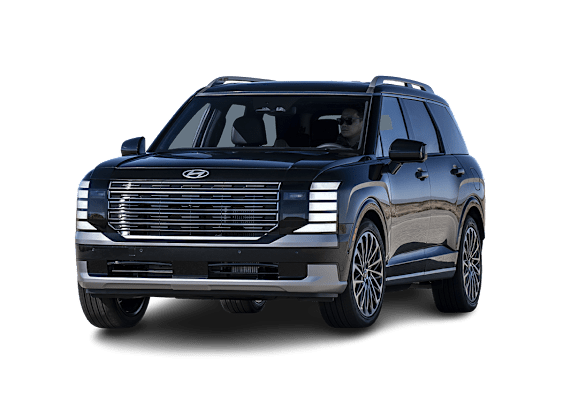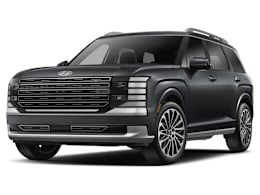Introduction
Is the 2026 Hyundai Palisade Better as a Hybrid?Among three-row SUVs, only the Grand Highlander Hybrid offers similar fuel economy and interior space
Overview
We were excited when the top-of-the-line 2026 Hyundai Palisade Hybrid Calligraphy AWD we purchased from a local dealership arrived at our Auto Test Center. Big, family haulers are popular these days, as are hybrids. The Palisade Hybrid is the rare vehicle that fits in both categories.
As soon as we published our first thoughts on the nonhybrid Palisade, you told us that you wanted to know more about the Palisade Hybrid after we got the chance to drive it, so we’re sharing our initial thoughts and some notes from our logbook before we put the SUV through a series of more than 50 empirical evaluations at our test track in Connecticut.
The Palisade Hybrid is the first model powered by Hyundai’s newest hybrid setup, which is based on the company’s existing 2.5-liter turbocharged four-cylinder engine. All-wheel drive is optional. A Palisade Hybrid SEL Premium starts at $47,520, although a well-equipped Calligraphy model like ours costs considerably more. Aside from a missing spare tire, a tiny “hybrid” badge on the back, and a slightly higher price tag, it looks identical to the nonhybrid Palisade, which has already charmed us with its spacious and well-appointed interior, smooth ride, and formal good looks.
The main benefits of the hybrid are improved fuel economy (our Calligraphy AWD promises 29 mpg, up 9 mpg from the nonhybrid) and extra horsepower (329 compared with the nonhybrid’s 287). Numbers are one thing, but our objective tests—not to mention the time we spend living with the car the same way an owner does—will tell a fuller story.
The launch of the Hybrid is also the starter pistol for a two-horse race between the Hyundai Palisade Hybrid and the Toyota Grand Highlander Hybrid, which are currently the only three-row hybrid SUVs that sit on the larger side of midsized.
In addition to a detailed review, we plan to write a detailed head-to-head comparison between the Palisade and Palisade Hybrid, and between the Palisade Hybrid and Grand Highlander Hybrid as soon as testing is complete.
In the meantime, CR members can read our initial thoughts.
We bought a 2026 Hyundai Palisade Hybrid Calligraphy AWD with a 329-hp, 2.5-liter turbocharged four-cylinder engine; 6-speed automatic transmission; and all-wheel drive. With a few minor options, the total MSRP came to $60,995.
The final assembly point is Ulsan, South Korea.


















